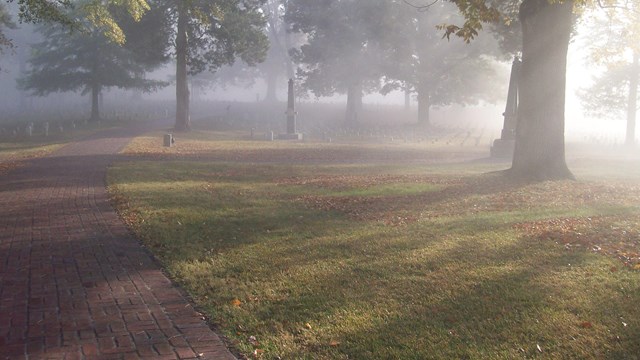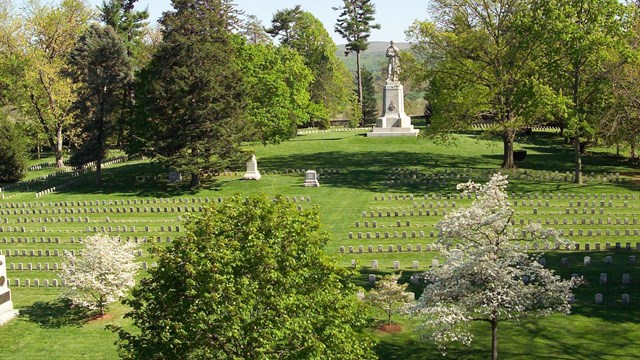
NPS
"Sacred Groves”
Following the Civil War, the United States Congress passed the National Cemetery Act of 1867, requiring the Secretary of War to provide a “proper burial” for soldiers who served in the US Army during the war. The national cemetery landscapes were designed to support the feeling of dignity, honor, and commemoration. These “sacred groves” contained grave markers laid out in geometric patterns in the shade of tall tree canopies, protected by a perimeter wall. Many contain monuments of distinction, and all are preserved in perpetuity.
Burials in national cemeteries are associated with the War of 1812, the Civil War, the Indian Wars, Spanish American War, First and Second World Wars, Korean War, Vietnam War, and the Gulf War. These are the final resting places for the more than 112,000 people who served in the US Armed Services, as well as their families. While family members may still be interred into graves of existing burials at all 14 national cemeteries managed by the National Park Service, only Andersonville National Cemetery remains open to new burials.
Between 1933 and 1942, 14 national cemeteries were transferred to the National Park Service. Discover more about the history, design, and preservation of these national cemeteries and plan your visit.

An introduction to the history and evolution of national cemeteries in the United States, from the Civil War to today.

Get to know the features and characteristics that are typical to national cemetery design.
Explore Articles
Last updated: July 20, 2023
